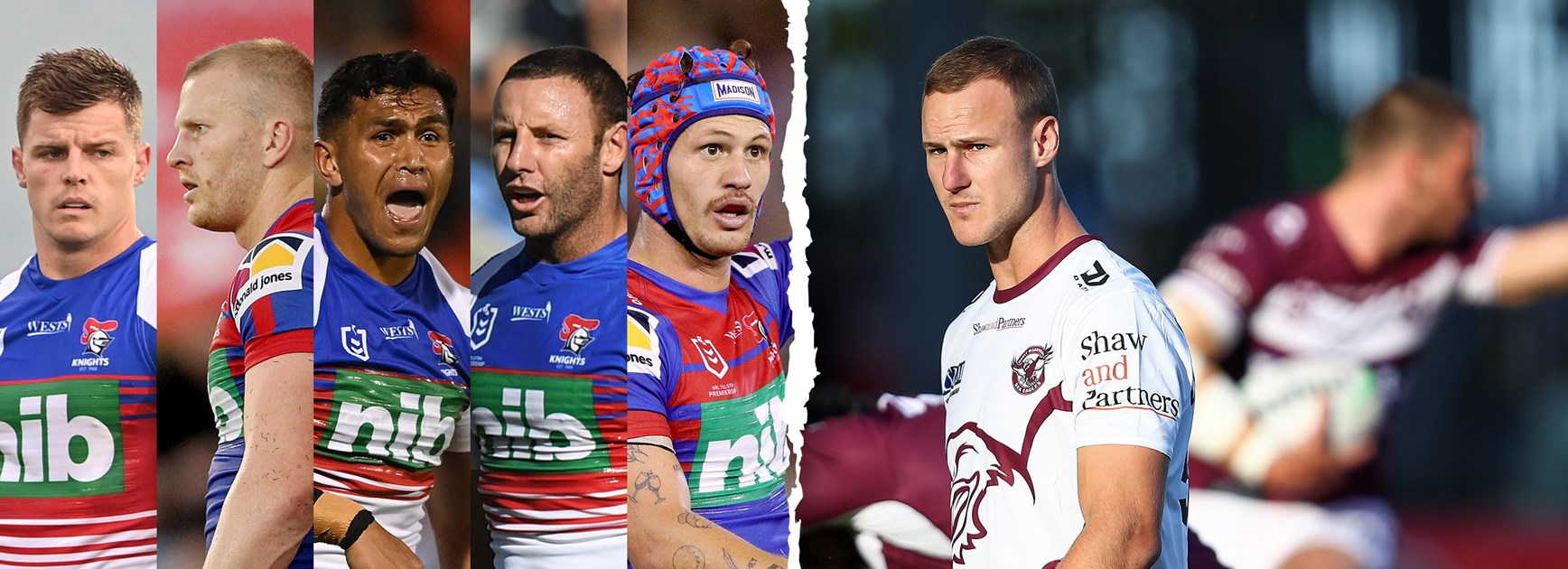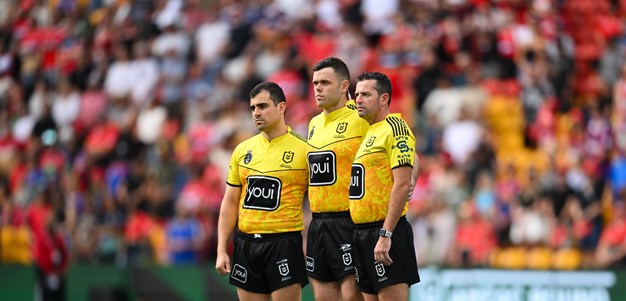
When it comes to the subtle art of captaincy in the NRL, is it a job best left to one man or is the increasingly popular leadership group the way to go?
In recent times we have seen the Roosters enjoy premiership success with Jake Friend and Boyd Cordner as co-captains while Cameron Smith did just fine on his own at Melbourne and took them to premierships in 2012, 2017 and 2020.
Every coach in the NRL will have their own preference and they get the final word on who has the (c) next to their name and who calls the shots out on the field for their team.
So which method has the most merit?
One captain's better than a leadership group
For – Martin Lenehan (NRL.com senior journalist)
One captain, one voice, one message.
When it comes to leading a team both on and off the paddock, their should be one respected leader who drives the culture and the standards.
Episode 10 – Tom Trbojevic
Sure, there should be plenty of leaders at every club, but there should only be one true captain.
The greatest captain of modern times and possibly of all time, Cameron Smith, is the perfect example of why teams need just one man at the helm.
One of the reasons Smith and coach Craig Bellamy made such a formidable team is that Captain Cam was Bellyache's eyes and ears on the training paddock and out in the middle.
League Leaders: Wrecking ball to captain
No need for a committee meeting to decide whether to take a shot at penalty goal or keep the pressure on.
No need for a committee meeting to decide whether the Storm would call for a captain's challenge or cop the decision and move on.
In stark contrast, the leadership group favoured by clubs like Newcastle, who have no fewer than five "captains", is surely a recipe for too many cooks spoiling the broth.
Daniel Saifiti, Jayden Brailey, Blake Green, Mitch Barnett and Kalyn Ponga are fine players in their own right but the jury is still out on whether a group chat can carry the same weight as a concise message from the main man.
This is a model favoured by clubs blessed with so many great leaders that they can’t settle on one, think JT and Matt Scott at the Cowboys or Friend and Cordner at the Roosters, or clubs not willing to pin their faith in just one man lest he wilt under the pressure.
While leadership comes naturally to men like Smith, Cordner, Thurston, Manly's Daly Cherry-Evans and Cronulla's Wade Graham, others are more comfortable being able to share the responsibility and get reassurance they are making the right calls.
When the dust settles in the 2021 season, Nathan Cleary and Isaah Yeo may well be standing side by side on the dais at Stadium Australia having co-captained the Panthers to the premiership.
DCE hits the posts with a grubber and ends up with a try
Or it could be South Sydney's favourite son Adam Reynolds holding the Provan-Summons Trophy, the poster boy for the old school captains who are more than capable of going it alone and copping the bouquets and brickbats that are part and parcel of the gig.
And then there's Clint Gutherson. In a Parramatta team full of senior voices and leaders, the man with the No.1 on his back is very clearly the No.1 man.
When all is said and done, the clarity that comes with having just one captain, one voice is a model that has stood the test of time for a reason.
Every try from Round 8
Against – Paul Zalunardo (NRL.com senior journalist)
Co-captains and leadership groups are just two of the names used to describe the growing trend of teams having more than one captain.
Call it what you will, it’s a good idea that utilises the experience a team has on offer and provides an added level of accountability for senior players.
While some teams have had a lend in recent years by having up to five co-captains (hello Wests Tigers under Ivan Cleary in 2018), the concept is a wise one if done the right way.
While Cleary snr has reined things in a bit since those days by having two captains - Yeo and Nathan Cleary - in 2021, he obviously remains a fan of the concept.
As well as being a great way to develop the leadership skills of younger players, shared captaincy also makes things a lot smoother when injuries and/or suspensions invariably strike.
If you’ve lost one captain and you have another one already in some form of ownership of the role, there is no need for any sort of transition.
While some teams are best served by having one man in charge, others gain a lot from sharing the workload.
During Cameron Smith’s time at the Storm, Darren Lockyer’s in Brisbane and even Daly Cherry-Evans’s stint as skipper with Manly right now, you have had a clear focal point who others gravitate towards.
Get Caught Up: Round 8 must-see moments
At club’s that person doesn’t exist, why not share the job around.
Captains needs to be more than just leaders on the field. They need to be a go-between from the playing group to the coach and also a trusted confidante who players can go to when they need a chat about either the game or life in general.
Having more than one person for teammates to go opens up greater communication channels and helps ensure all players have someone they know they can lean on.
With the differing sides of this argument best served by a case-by-case basis, the act of teams having more than one captain will remain a viable option.
The views in this article do not necessarily express the opinions of the NRL, ARLC, NRL clubs or state associations.

